#batchim
Explore tagged Tumblr posts
Text
Batchim rules
There are 7 key batchim rules that depend on the consonants used. Some characters like ㄱ, ㅋ, and ㄲ share the same rule as you can guess because they are very similar consonants.
ㅇ = ㅇ
ㄱ, ㅋ, ㄲ, ㄳ, ㄺ = ㄱ
ㄷ, ㅌ, ㅅ, ㅆ, ㅈ, ㅊ, ㅎ = ㄷ
ㅁ, ㄻ = ㅁ
ㅂ, ㅍ, ㅄ, ㄿ = ㅂ
ㄹ, ㄼ, ㄾ, ㅀ = ㄹ
ㄴ, ㄵ, ㄶ = ㄴ
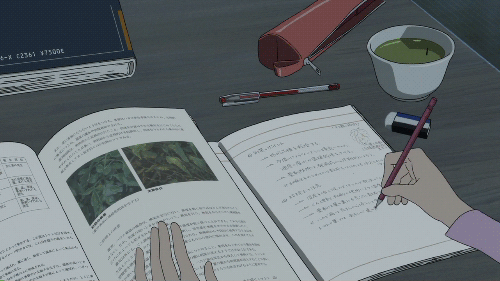
I’ll lay it out like this:
WORD –> PRONOUNCIATION : ROMANIZED
1. Rules for ㅇ
Starting off with ㅇ because it’s important to batchim rules overall. Once you learn how to read hangul you learn ㅇ is either an empty space when used first (like 아니) or an ‘ng’ sound at the very end (like 사랑).
The ‘ng’ sound is the ㅇ characters batchim, it never changes. BUT there’s more- if ㅇ begins the next syllable in a word the batchim will change:
있어 –> 이써 : isseo
있다 –> 읻다 : et-da
For the first one the bottom consonant ㅆ takes over the space of ㅇ for pronunciation making it sound more like 이써. 있다 above follows the normal batchim rules and the ㅆ takes on a ㄷ sound.
2. ㄱ, ㅋ, ㄲ, ㄳ, ㄺ = ㄱ
This rule affects consonants including ㄱ or his relatives and simply makes anything a ㄱ sound no matter how hard the character would be on its own. Even ㄳ which is combo k and s becomes just k sound.
한국어 –> 한구거 : hangugeo
책은 –> 채근 : chekgun
3. ㄷ, ㅌ, ㅅ, ㅆ, ㅈ, ㅊ, ㅎ = ㄷ
This affects a bunch of consonants so it’s important to remember.
꽃 –> 꼳 : ggot
좋다 –> 조타 : jota
There’s a special rule about ㄷ and ㅌ ending before a ㅇ though. You’ve probably heard it with 같이; instead of becoming 가티 the ㅌ changes to ㅊ making it 가치. ㄷ changes to ㅈ as well.
같이 –> 가치: kachi
4. ㅁ, ㄻ = ㅁ
몸이 –> 모미 : momi
5. ㅂ, ㅍ, ㅄ, ㄿ = ㅂ
없다 –> 업따 : ob-da
없어요 –> 업서요 : ob-seoyo
Now ㅂ has some special rules for itself, you probably knows 감사합니다 but it’s not pronounced kamsahaBnida it’s more like kamsamnida
ㅂ starting a word – use a softer b sound: 바나나
ㅂ in the middle – it creates a b sound: 일번
ㅂ at the bottom – can have m sound depending on what follows like in 감사합니다
A trick to think of is try saying 감사합니다 20x fast. Maybe originally the word was pronounced fully but people get lazy, slur their words, etc and pronunciation goes towards what’s easiest.
6. ㄹ, ㄼ, ㄾ, ㅀ = ㄹ
별이 –> 벼리 : byeo-re
핥은 –> 할튼 : halteun
7. ㄴ, ㄵ, ㄶ = ㄴ
앉다 –> 안다: anta
돈이 –> 도니 : doni
#korean#langblr#studyblr#korean studyblr#korean langblr#batchim#hopefully this is easy enough to digest haha#grammar#mine#korean grammar
165 notes
·
View notes
Text
Hangul: batchim pt. 2.
2024년 7월 30일
안녕하세요 여러분!
Today, i’ll teach you how do you pronounce when you have two consonants at the end of a syllable. It’s more easy than you can think, and you will get used to it very soon (you just have to practice).
I’ll give you the examples first, and then, how do you have to pronounce it.
넋, 앉, 값, 많, 싫, 여덟, 곬, 핥, 닭, 삶, 읊
As you can see, all of them have two consonants at the bottom of the syllable, and only one of them sounds when you speak.
Then, how you pronounce all of it?
Following the same order, we have all of this. You just have to learn these. The purple ones are what you pronounce when you speak.
ㄱㅅ - ㄴㅈ - ㅂㅅ - ㄴㅎ
ㄹㅎ - ㄹㅂ - ㄹㅅ - ㄹㅌ
ㄹㄱ - ㄹㅁ - ㄹㅍ
So, when you say 넋 you are saying “넉” (it’s not the same word, it’s just how it sounds; keep this in mind, please!!!!)
There are some exceptions for this rule:
If a word comes with ㄺ followed by ㄱ.
If the next syllable begins with a vowel, both consonants will sound (ex.: 없어 will sounds like 업서).
But, if the syllable ends with two consonants and the last one is ㅎ, this one doesn’t sound or sound with the next vowel (ex.: 많이 sounds like if you are saying 마니.)
#koreannook#korean learning#korean studyblr#koreanblr#korean language#korean langblr#langblr#learn korean#learning korean#study korean#studyblr#studying korean#korean hangul#hangul#batchim#korean batchim#한국어#한국어 공부#한국어 배우기#한국어 공부하기
19 notes
·
View notes
Text
Hangul: batchim pt. 2.
2024년 7월 30일
안녕하세요 여러분!
Hoy vamos a aprender como pronunciar una palabra cuando tiene dos consonantes en una de las sílabas. Es más fácil de lo que imaginas, y una vez te hagas a ello, podrás hacerlo sin problemas (solo tienes que aprenderte esta regla).
Os daré unos ejemplos de palabras que tienen este suceso, para que veáis a qué me refiero.
넋, 앉, 값, 많, 싫, 여덟, 곬, 핥, 닭, 삶, 읊
Como puedes ver, todas ellas llevan dos consonantes al final de la sílaba (en la parte baja), y solo una de esas dos consonantes, tiene que sonar.
Entonces, ¿cuál tenemos que pronunciar?
Solo se pronuncian las consonantes marcadas en morado. Estos son las únicas mezclas de dos consonantes, así que, una vez te aprendas estas, podrás decir cualquier palabra.
ㄱㅅ - ㄴㅈ - ㅂㅅ - ㄴㅎ
ㄹㅎ - ㄹㅂ - ㄹㅅ - ㄹㅌ
ㄹㄱ - ㄹㅁ - ㄹㅍ
Así que, cuando digas 넋 tienes que decir “넉” (¡¡¡¡ esto es solo un ejemplo escrito para que sepáis cómo se pronuncia !!!!)
Hay algunas excepciones
Si la palabra tiene ㄺ seguido de ㄱ, entonces, se pronuncia la ㄹ.
Si en la siguiente sílaba, empieza con una vocal, entonces, las dos consonantes se pronuncian.
Si la sílaba termina con dos consonantes, pero la siguiente sílaba empieza con ㅎ, entonces, no suena con la siguiente sílaba, aunque tenga una vocal (Ej.: 많이 suena como si dijeras 마니.)
#coreanoencasa#coreano#aprende coreano#aprender coreano#estudia coreano#korean language#korean langblr#korean learning#korean studyblr#koreanblr#learning korean#learn korean#study korean#studying korean#korean hangul#hangul#korean batchim#batchim#한국어#한국어 공부#한국어 배우기#한국어 공부하기
4 notes
·
View notes
Text
DI JAMIN LULUS UJIAN EPS-TOPIK KOREA JIKA IKUTI 5 TIPS BERIKUT
Hallo kawan-kawan Komunitas Eps Topik Indonesia, salam sehat dan semangat belajar. berikut admin akan membagikan tips agar bisa lulus ujian EPS-TOPIK KOREA buat kawan kawan yang mandiri. Ok mari kita simak : Belajar dari buku standar EPS-TOPIK 2013 dan EPS-TOPIK 2015 yang di berikan oleh HRD Korea. Hafalkan kosakata baru minimal 10 sampe dengan 20 kosakata tiap hari. Kosakata yang dihafalkan di…

View On WordPress
#angka dalam bahasa korea#batchim#belajar bahasa korea#belajar bakor#belajar berhitung dalam bahasa korea#Belajar Mengucapkan Rasa Makanan dalam Bahasa Korea#belajar warna dalam bahasa korea#bilangan korea#bilangan sino#eps topik korea#hangeul#konsonan korea#mahir belajar bahasa korea#partikel korea#PERKENALAN DIRI SAAT TEST SKILL EPS TOPIK KOREA#test skill eps topik korea#trik mudah belajar bahasa korea#vokal korea#색갈#수학
0 notes
Text
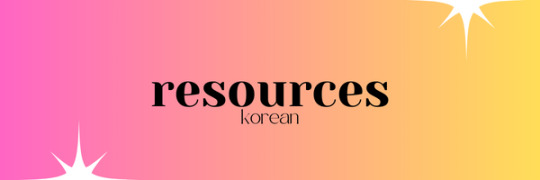
korean learning resources !
hello, my name is ri (ree) and i've been learning korean for almost 2 years. when i started learning korean, i tried using almost every source i could find and watched a whole lot of youtube videos.
whether you have just started learning the language, or have been a learner for a couple of months, here's a list of resources you can use!
﹡﹡ ʳᵉˢᵒᵘʳᶜᵉˢ ʷⁱᵗʰ ᵃ ʰᵉᵃʳᵗ ᵃʳᵉ ᵒⁿᵉˢ ⁱ ʰⁱᵍʰˡʸ ʳᵉᶜᵒᵐᵐᵉⁿᵈ

HANGUL VIDEOS:
♡ miss vicky hangul in 30 minutes
♡ all about batchim (part 1)
♡ all about batchim (part 2)
♡ all about batchim (part 3)
learn hangul in 90 minutes (start to finish)

LEARNING SITES:
♡ talk to me in korean: provides a grammar course & other learning materials.
how to study korean: provides free grammar with vocab lists with pronounciation.
loecsen: phrases & vocabulary with pronounciation.
♡ learnkorean: provides a course, grammar lessons, flashcards, worksheets & more all for free!

YOUTUBE CHANNELS:
seemile korean: topik help
♡ choisusu: learn korean vlog, podcasts & more
♡ conversational korean: vocabulary videos, lessons, listening practice tests & more!
♡ banzi's secret diary: cute cartoon for listening practice! (no subs for a challenge)
learn korean with jadoo: another cute cartoon with english & korean subtitles.

READING PRACTICE:
brunch story: stories by users in korean. (for more advanced learners)
♡ korean comics: one comic in korean & english with small vocab list!
do you want to go eat?: a cute & simple webtoon comic
♡ story korean: stories with vocabulary & grammar tips.

APPS:
mirinae: korean sentence analyzer & more (android & ios)
audioclip: korean podcast app for listening practice (android & ios)
todaii easy korean: learn koran by reading & listening to news (android & ios)
vocat: create your own vocabulary lists (android & ios)
podo korean: grammar lessons, vocabulary, reading & listening (andoid & ios) ** for vocab only download podo words
eggbun korean: learn korean with a chatbot tutor names lanny! (android & ios)
drops: korean vocabulary apps (android & ios)

PODCASTS:
cozy story time in korean
♡ choisusu
♡ tayoni's korean podcast
korean story

hopefully this is useful to you and good luck with your learning journery! and let me know if any of the links aren't working!
you can follow me on my instagram: wrldwithri ✨ to follow me along my language learning journey.
#📎 sites#langblr#language learning#learning languages#learning korean#korean#studyblr#studygram#study korean#korean studyblr#korean resources#study resources#korean learning#learn korean
635 notes
·
View notes
Note
Would it be possible for you to make a post talking about/explaining batchim? I watched two videos about it on YouTube but I was still really confused… I found your explanations (and guide in general) very helpful and interesting so I was thinking you could make a post that was clear and understanding.
Hi anon, sorry it took me like... *checks calendar* ... three weeks to answer this... I got a little busy. Maybe very busy. Oh well.
But oh boy, yes, I remember the days of having to learn batchim... Well, if I'm being entirely honest, in my Korean classes my professors actually never touched on the topic besides some of the most basic forms. They just hoped that we would pick it up by ourselves through listening and reading practices.
And in a way, that's exactly what happened.
However, I do know it's pretty hard for someone just starting out, especially if you've only just learned Hangul. I will keep it real with you: don't view batchim as some type of roadblock or something that stands in the way of you progressing with your learning. With enough practice, you'll begin to pick up on these changes and eventually integrate them fully with your speaking skills.
Despite this, I will explain batchim as best as I can, and I will do it from a more linguistic type of view, since I actually study linguistics/phonetics (한국어로 '언어학' & '음성학')! A lot of sources will try to explain batchim in its most simplest form, but I'll try to get a bit more technical with it, but hopefully not in a way that is confusing.
Alright, let's begin!

받침 BATCHIM OVERVIEW
Batchim, in the most simplest terms, is the final consonant at the bottom of a Korean syllable block. However, depending on which consonant it is and which sound proceeds it, can have a pretty big impact as to how its pronounced.
I know everyone (including me) goes on and on about just how perfect the Korean writing system is, and how it's phonetically consistent -- until it's not. But we try not to scare Korean learners away from learning the language, and to be fair, even though batchim can be confusing, it is still way easier than English orthography (writing).
Intervocalic Forms: Voicing
Okay, before I actually dive into the more complex batchim forms, I'm actually going to start off with something that is not batchim. Wow. I know, this is a little inconsistent.
But anyways, have you ever looked at a Korean Hangul chart and asked yourself: why can the ㄷ, ㅂ, ㄱ all be read as both a d & t, a b & p, and a g & k? Many might answer this question with a simple, "because Korean sounds are not like English sounds", which yes, but also because these characters can be read like voiceless and voiced variants depending where they are in a sentence.
For a bit of background, in linguistics, we classify consonant forms as "voiced" or "voiceless". All vowels are voiced sounds, so they don't have a voiceless classification. Basically, to make it as simple as possible, this just means that some sounds produce more buzzing in the throat, whereas others do not. I think the best way for me to really show this to you is for you to say "s" and then for you to say "z"... you feel that difference, right? That's voicing. B, G, D are all voiced, whereas P, K, T are not.
So to try to sum this up: vowels are voiced, liquids (r & l ㄹ) are voiced, nasals (m ㅁ, n ㄴ, ng ㅇ) are voiced.
In Korean, you can have words where one character can be read as both its voiced and voiceless variant. How do you know when to voice versus when to leave it voiceless? Intervocalic positioning.
Intervocalic, in this case, basically just means between voiced sounds.
Let's take the word "idiot" in Korean. 바보. Notice that when you said this word, the first sound in 바 is more like a p, right? And then the second sound in 보 is more like a b, right? That's because the ㅂ in 보 is sandwiched between two voiced vowel sounds, ㅏ & ㅗ.
Other words where this trend is apparent:
바다: pa-da; ocean
아버지: a-beo-ji; father
예쁜 구름: ye-ppeun gu-reum; pretty cloud(s) Again, the ㄱ in this one is read like a g because it comes after a nasal (m, n, & ng), and a vowel, and nasals & vowels are voiced.
You don't need to memorize/learn any of this linguistic mumbo jumbo, but it's just a way of showcasing a pattern that many people learning Korean might have not noticed. You don't need to hyperfixate or constantly look out to see which characters are sandwiched between which characters... because that would be exhausting. A lot of this voicing occurs because it's just more natural to the human articulators to pronounce it that way, so you might just end up doing it without thinking. I just thought I might answer that quick question that some people might've had about Hangul.
But anyways, isn't that cool?! It's cool to me. The linguistics student.

Coda Neutralization
I know, that's kind of a scary linguistic term. Coda. In the simplest words, it's just a term that means the final sound in a syllable. Like the batchim. But in this case, Korean has a lot of batchims that when they are the final sound and not followed by an additional vowel (again, they're the coda), then their sound will neutralize/sound the same as other consonant sounds.
The first rule you should know is that if the sound is aspirated (ㅋ, ㅌ,ㅊ, ㅍ) or doubled/tensed (ㄸ, ㅆ, ㅉ, ㅃ, ㄲ) in the batchim, if it is by itself and does not connect to a vowel, it will unaspirate/untense.
EX) 있 -> 잇, 밖 -> 박, 엌 -> 억, 밭 -> 받, 빛 -> 빚 etc...
The 'T' Variant
Many consonants in the Korean batchim will come out sounding like a 't' if there is no vowel to follow them.
ㅅ
ㄷ
ㅈ
ㅎ
So, words like 곧 (soon, immediately) will sound like got. 빛 (light) will sound like bit, and not bich. Remember, ㅊ had to unaspirate first as well.
The Normies
These are the batchims that are more loyal to their sounds, and will only undergo the aforementioned unaspirating and untensing.
ㅂ
ㄱ
ㅁ, ㄴ, ㄹ don't have tensed/aspirated forms, so they're just chilling fr.
But like I said multiple times, this is only if there is no vowel sound to carry over the batchim sound. If there is a vowel, the sounds will be pronounced as normal.
Like 있다, when added to ~어요, the ㅆ will undergo resyllabification and will be read as i-sseo-yo (있어요).
Cultural notes: Sometimes Koreans will pronounce the batchim as its original sound for comedic effect. I've heard Jimin do this a lot with the ~ㅅ/ㅆ batchim.
Tensification

This section will focus on ㄷ, ㅂ, ㄱ, ㅈ, ㅅ and their tensed/doubled variants ㄸ, ㅃ, ㄲ, ㅉ, ㅆ. Basically the rule goes that if a non-tensed consonant that has the ability to be doubled/tensed is in the batchim, and it comes into contact with another consonant that has the ability to be doubled/tensed, the latter consonant will be doubled/tensed.
Kind of a wordy explanation, but let me try to clarify it.
Take the word 식당 'restaurant' for example, the ㄱ is in the batchim and the consonant that proceeds it is a ㄷ. Both of these sounds have tensed variants. So instead of reading this like sik-dang, you would read it more like sik-ddang. The latter consonant of ㄷ has been doubled into a ㄸ.
학교; school: hak-kyo -> hak-kkyo
먹방 mukbang, (taken from the verb 먹다 [to eat] and the noun 방송 [broadcast/stream]); muk-bang -> muk-bbang
낮잠; nap (낮 day, 잠 sleep): nat-jam -> nat-jjam
있다; to have, to exist: it-da -> it-dda
Nasalization
The process of nasalization occurs when a stop consonant (p ㅂ, t ㄷ, k ㄱ) comes into contact with a nasal consonant (m ㅁ, n ㄴ, ng ㅇ). Though the 'ng' sound can't ever be a proceeding consonant since the 'ng' sound can only be voiced in the batchim, but you know...
I'll explain further.

This is BTS' wonderful MAKNAE LINE. The word maknae in Korean is spelled like 막내. As you can see, the batchim ㄱ (a stop consonant) is coming into contact with the nasal ㄴ sound.
So how will that impact the pronunciation of this word?
When the batchim ㄱ comes into contact with the proceeding ㄴ sound, the ㄱ sound transforms into an ㅇ sound. So instead of saying the word mak-nae with a prominent 'k' sound, you would say it more like mang-nae. The process of nasalization has just occurred!
Other Instances of ㄱ + ㄴ interactions:
학년; school year/grade: hak-nyeon -> hang-nyeon
먹는다; to eat (in the plain form): meok-neun-da -> meong-neun-da
ㄷ&ㅂ Interactions with Nasals
When a batchim ㄷ (and its other variants) comes into contact with a nasal, it assimilates and turns into a ㄴ sound.
받는다; to receive (in the plain form): bat-neun-da -> ban-neun-da
However, if the batchim ㅂ (and its variants) comes into contact with a nasal, they can take on an ㅁ sound. Also, remember, I taught coda neutralization first, because remember, the ㅅ turns into a 't' sound in the batchim if it is not followed by a vowel!
있는데; 있다 [to be] + ~는데 grammar form: it-neun-de -> in-neun-de
앞문; front door: ap-mun -> am-mun
~습니다; deferential conjugation form: seub-ni-da -> seum-ni-da
So, to sum it up, just remember this quick little chart.
ㄱ -> ㅇ ㄷ -> ㄴ ㅂ -> ㅁ
ㄹ Nasal Interactions
ㄹ is a bit of a special case; if nasals like ㅇ & ㅁ are in the batchim, or if ㄱ, ㄷ, ㅂ are in the batchim BEFORE a ㄹ, the ㄹ will change into a ㄴ sound.
심리; psychology: shim-ri -> shim-ni
통로; aisle: tong-ro -> tong-no
This makes a lot of sense! Just try saying tong-ro or shim-ri... it just feels a little uncomfortable, right?
Lateralization: Progressive & Regressive
Time for some more fun ㄹ forms! This particular form circles around ㄹ & ㄴ. I want you to think of these characters as siblings, and ㄹ is the older sibling, and ㄴ is the younger sibling that wants to copy everything that ㄹ does. Basically, if ㄹ and ㄴ are right next to each other, the ㄴ will turn itself into a ㄹ phonetically. Remember, these are still spelled the same way, but when spoken it just sounds different.
There are two instances in which this structure can occur, and it's formally known as progressive or regressive lateralization.
Progressive Lateralization: the ㄹ is in the batchim and turns the proceeding ㄴ into an ㄹ sound.
설날; Korean New Year: seol-nal -> seol-lal
실내; indoor: sil-nae -> sil-lae
Regressive Lateralization: the ㄴ is in the batchim and turns into a ㄹ upon connection to a proceeding ㄹ sound.
신라; Silla Dynasty: sin-ra -> sil-la
난로; stove: nan-ro -> nal-lo
Again, you don't really need to memorize these linguistic terms. As long as you know that ㄴ changes to a ㄹ if they're next to each other, that's good enough.
Palatalization
This will focus mainly on ㄷ and its aspirated (again, just meaning its just spoken with more air) variant ㅌ, and their interactions with 이. This form is quite easy and there's not really a lot of content that goes into this one. Basically, all you need to remember is...
When ㄷ is in the batchim and meets 이, the following sound that carries over will not be 디, but instead 지.
맏이; the eldest/firstborn (like Seokjin!): ma-di -> ma-ji
When ㅌ is in the batchim and meets 이, the following sound that carries over will not be 티, but instead 치.
같이; together: ka-ti -> ka-chi

Syncope (Deletion) & Fusion
This is primarily going to focus on the function of ㅎ, who has been up until this point pretty impartial toward most of the changes that we have covered. However, the ㅎ undergoes deletion and fusion when meeting certain vowel and consonant forms.
If ㅎ comes into contact with unaspirated stops (ㄱ, ㄷ, ㅂ) & affricates (ㅈ), it will aspirate them/carry an aspirated sound over. This can occur with ㅎ in the batchim, or if its proceeding one of these characters. This explanation might be confusing, so bear with me if you can.
DELETION: ㅎ in the batchim
A common process that ㅎ undergoes is having its sound "deleted" when proceeded by a vowel sound. ㅎ is a "weak" consonant, and therefore just falls silent, even going as far to be overpowered by other consonants in its double-batchim forms.
좋아요; it's good [좋다 to be good] + 아/어요 conjugation form: jo-ha-yo -> jo-a-yo
많이; a lot (adv.): man-hi -> ma-ni
괜찮아요; it's alright [괜찮다 to be alright] + 아/어요 conjugation form: gwen-chan-ha-yo -> gwen-cha-na-yo
As you can see, in both 괜찮아요 & 많이, they have the double batchim ㄶ, but in this case, the ㅎ is completely ignored in favor of the ㄴ.
FUSION: ㅎ in the batchim
This is when ㅎ comes before an unaspirated stop (ㄱ, ㄷ, ㅂ) or affricate sound (ㅈ). The ㅎ will turn its proceeding sound into its aspirated form (ㅋ, ㅌ, ㅊ, ㅍ).
좋다; to be good: joh-da -> jo-ta (조타)
넣다; to put/insert: neoh-da -> neo-ta (너타)
싫지만; 싫다 [to loathe/disagree] + ~지만 but: shil-ji-man -> shil-chi-man (실치만)
FUSION: Following Stops and Affricates
This is when ㅎ proceeds an unaspirated stop (ㄱ, ㄷ, ㅂ) or affricate (ㅈ) batchim. The ㅎ will carry over the sound from the batchim much like a vowel would, but it will carry its aspirated form (ㅋ, ㅌ, ㅊ, ㅍ).
막히다; to be blocked: mak-hi-da -> ma-ki-da (마키다)
입학; matriculation (entering a school): ib-hak -> i-pak (이팍)
축하하다; to congratulate/celebrate: chuk-ha-ha-da -> chu-ka-ha-da (추카하다)
When you sing Happy Birthday in Korean, the process of fusion takes place!
생일 축하합니다 생일 축하합니다 사랑하는 [이름] 씨 생일 축하합니다~🎵
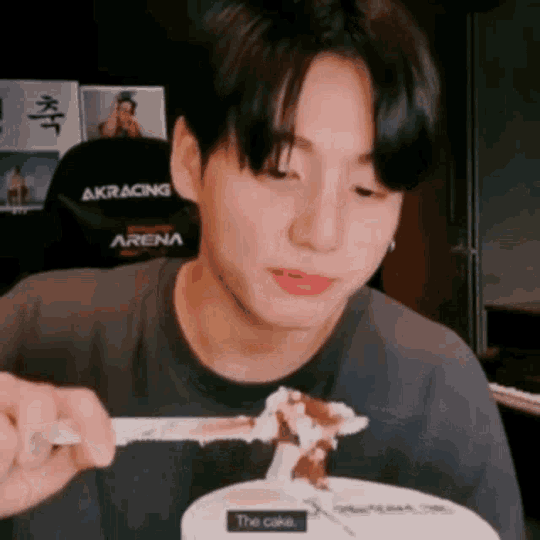
Double Batchim Battle!
Well, we've reached the end of the road... for now, anyway. The reason why I decided to include this last is because this is something that'll just require memorization. I don't really have any cool hacks for you here, it's just something you'll have to manage to cram into your brain. So, let me make a WHO WILL WIN!!! type of guide for you. Again, this is in the case of reading it without a vowel for the other batchim to attach itself onto.
ㄱ WINS!
ㄳ - ㄱ ㄺ - ㄱ
ㅂ WINS!
ㅄ - ㅂ ㄼ - ㅂ
ㅁ WINS!
ㄻ - ㅁ
ㄴ WINS!
ㄵ - ㄴ ㄶ - ㄴ
ㄹ WINS!
ㄽ - ㄹ ㄾ - ㄹ ㅀ - ㄹ ㄿ - ㄹ
Alright, did you get all that? I hope so because I have no other way of explaining this.

The End ... ?
Congratulations, or 축하해요! You made it this far. If you managed to get through that without a headache, I applaud you. As I stated in the beginning, trying to memorize/learn all of this in one go is motivation suicide. So, I really don’t recommend that you get stuck on this. Don't worry about it too much, you'll pick it all up eventually!
Also, there are a fewww more details when it comes to batchim, however I thought it would be better to save that for a Korean conjugation/present tense lesson instead, since I feel like it fits a bit better into the "curriculum" of my brain. The conjugation lesson would be devoid of linguistic terminology, but would still answer some questions some may have about it.
Well, until next time!
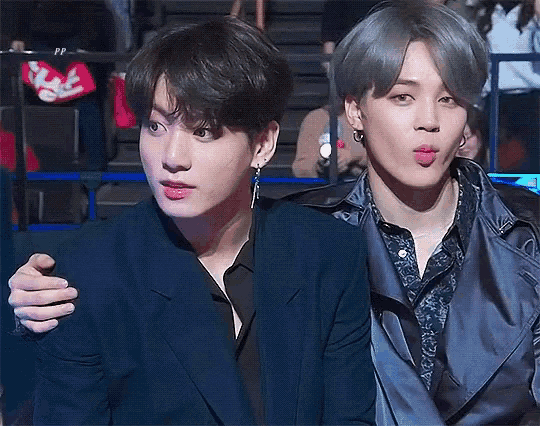
29 notes
·
View notes
Text


study time! it's starting to get a little bit difficult when it comes to pronunciation but i am proud of myself for studying a lot ♡ today i put more effort and studied around 2~3 hours focusing solemly on 받침 and now before going to bed i did some homework (second pic.)
(ptbr) hora de estudar! ta começando a ficar um tico difícil quando se trata de treinar a pronúncia mas eu tô orgulhosa de mim pq tô estudando bastante ♡ hoje eu me esforcei mais (que o normal) e estudei por umas 2~3 horas focando no batchim 받침 e agora antes de dormir eu fiz algumas lições de casa (segunda foto)
#productivity#study aesthetic#study blog#study motivation#korean studies#language study#studyspo#studyblr#korean studyblr#korean language#langblr#languages
46 notes
·
View notes
Text
i got synthesizer v studio 2! ...is it good?
personally, i would only buy it if you want a much more realistic tone/sound, or if you want to use the new/fixed features on certain voicebanks
Major SV2 Differences
They removed the ability to disable AI autopitch in SV2. If you load a file and use a voicebank, it will automatically overwrite any pitchbending already on the file.
As a result of not being able to disable autopitch, it takes longer for SV2 to render audio, as it also needs to recreate the pitches for each edit.
They also removed parameter presets.
The way vocal modes work has been changed drastically on all banks. I don't know what they did, but there's a noticeable difference on voicebanks like Eleanor Forte AI, ROSA, and other voicebanks that have vocal modes which don't seem to work well on SV1.
All standard banks have been converted to AI banks on SV2. All standard banks except for MEDIUM5's can be upgraded for free, provided you have registered the original bank on your account.
Accents are much more noticeable on banks built for SV2. For example, Kiyoteru SV2 sometimes makes an R sound instead of an L when singing in English. (This does not apply to the SV1 versions of miki SF-A2 and Kiyoteru, and probably won't apply to PASTEL and HALO.)
Korean does not support batchim and the XLS has missing phonetics. I don't know anything about the language, this is just repeating what I've seen other people say. ^^'
Certain voicebanks are not available for SV2. The original ANRI voicebank is not downloadable, and people have been experiencing issues downloading MEDIUM5 banks.
#me.txt#synthv#synthesizer v#synthesizer v studio#synthesizer v studio 2#vocaloid#<- sure#eleanor forte#rosa sv#hiyama kiyoteru#anri
3 notes
·
View notes
Text

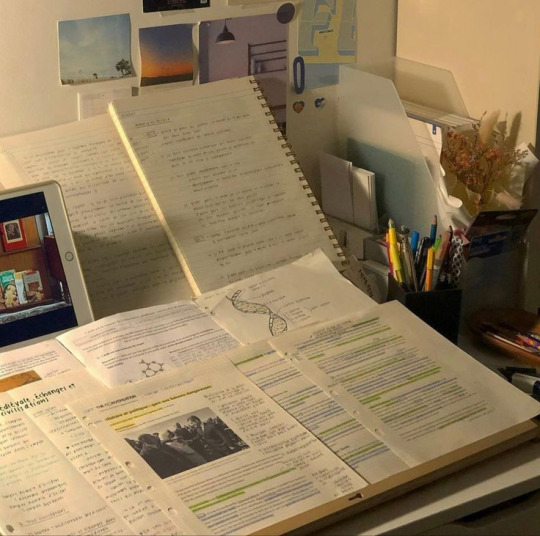




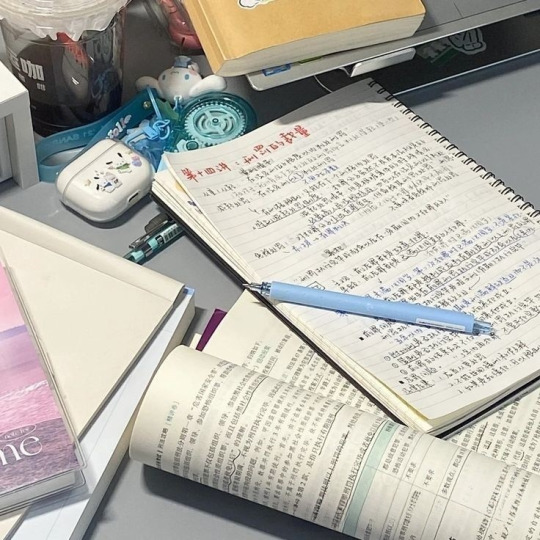


📖27.07.2023📖

Today's studies were a revision of consonant, vowels and the basics of batchim! i feel more confident on my reading abilities but i still have to work a lot on pronounciation (and hangul in general.)
i used Mrs Vicky's video to study, and using a post it to add little notes to my already made notes. also my username written using hangul is 가와마기 (fun fact: it comes from the word 까마귀, meaning crow. that's bc i really love crows, so i took the korean romanization and changed it around.)

#korean langblr#korean language#studybr#korean#langblr#language learning#study#journal#journal entry#korean learning#studyblr#koreanlangbr#hangul#moodboard#language learning progress
23 notes
·
View notes
Text
받침 = batchim
it’s Korean batchim rule in Hangul , im learning it completely informally in patchwork means
2 notes
·
View notes
Text
baby 2023 spinecorset two seconds from tears trying to understand batchim rules versus advanced 2024 spinecorset who can confidently determine how to pronounce words at least 70% of the time
2 notes
·
View notes
Text
Hangul: batchim pt. 1.
2024년 7월 29일
안녕하세요 여러분!
What is Batchim? It’s a consonant placed at the bottom and pronounced at the end in a Korean syllable block, and it’s has it’s own pronunciation, so be very careful.
ㄱ ㄲ ㅋ sounds like ㄱ.
누박 / 밖 / 부엌
(watermelon / outside / kitchen)
All of them sounds like g/k at the end.
ㄴ sounds like ㄴ.
잔 / 난
(glass / i)
All of them sounds like n at the end.
ㄷ ㅌ ㅅ ㅆ ㅈ ㅊ ㅎ sounds like ㄷ.
곧 / 끝 / 옷 / 있 / 낮 / 꽃 / 낳
(Soon / end / clothes / to be/to have / day / flower / give birth)
All of them sounds like d/t at the end.
ㄹ sounds like ㄹ.
달 / 길
(moon / street)
All of them sounds like r/l at the end.
ㅁ sounds like ㅁ.
밤 / 금 (Night / gold) All of them sounds like m at the end.
ㅂ sounds like ㅂ / ㅍ.
밥 / 앞 (rice / front (position)) All of them sounds like b/p at the end.
ㅇ sounds like ㅇ.
응 / 강 (Yes / River) All of them sounds like -ng at the end
And this will be the first part of batchim!
#koreannook#korean langblr#korean language#korean learning#korean studyblr#langblr#koreanblr#learn korean#learning korean#study korean#studying korean#studyblr#korean words#hangul alphabet#hangul#batchim#korean batchim#한국어#한국어 공부#한국어 배우기#한국어 공부하기
11 notes
·
View notes
Text
Hangul: batchim pt. 1.
2024년 7월 29일
안녕하세요 여러분!
¿Qué es el batchim? Es una consonante que se encuentra al final de una sílaba y que tiene su propia pronunciación para enlazarla con la siguiente sílaba.
ㄱ ㄲ ㅋ suena como ㄱ.
누박 / 밖 / 부엌
(sandía / fuera / cocina)
Todas suenas como g/k al final.
ㄴ suena como ㄴ.
잔 / 난
(crital / yo)
Todas suenas como n al final.
ㄷ ㅌ ㅅ ㅆ ㅈ ㅊ ㅎ suena como ㄷ.
곧 / 끝 / 옷 / 있 / 낮 / 꽃 / 낳
(Pronto / Fin / Ropa / tener / día / flor / parir)
Todas suenas como d/t al final.
ㄹ suena como ㄹ.
달 / 길
(Luna / Calle)
Todas suenas como r/l al final.
ㅁ suena como ㅁ.
밤 / 금 (Noche / Oro) Todas suenas como m al final.
ㅂ suena como ㅂ / ㅍ.
밥 / 앞 (arroz / en frente) Todas suenas como b/p al final.
ㅇ suena como ㅇ.
응 / 강 (Si / Río) Todas suenas como -ng al final.
¡Y esto sería la primera parte del batchim!
#coreanoencasa#korean language#korean learning#korean langblr#korean studyblr#koreanblr#studying korean#study korean#studyblr#learning korean#learn korean#korean words#korean batchim#batchim#hangul alphabet#hangul#aprende coreano#aprender coreano#estudia coreano#coreano#estudiar coreano#한국어#한국어 공부#한국어 배우기#한국어 공부하기
6 notes
·
View notes
Text
PERBEDAAN 밑 & 아래
아래 & 밑 sama-sama memiliki arti ‘bawah’, teman-teman bisa menggunakan keduanya kapan saja tanpa ada masalah, bahkan kebanyakan korea yang kutanya menjawab tidak ada perbedaannya. Tapi pada situasi tertentu salah satu dari mereka lebih baik digunakan daripada satunya lagi. [1] Kalau untuk sesuatu yang ada bagian atas dan bawahnya, gunakan sepasang dengan 위, 위 & 아래 contoh: 아랫층에는 누가 살아? – siapa yang…

View On WordPress
#angka dalam bahasa korea#batchim#belajar bahasa korea#belajar bakor#belajar berhitung dalam bahasa korea#Belajar Mengucapkan Rasa Makanan dalam Bahasa Korea#belajar warna dalam bahasa korea#bilangan korea#bilangan sino#eps topik korea#hangeul#konsonan korea#mahir belajar bahasa korea#partikel korea#PERKENALAN DIRI SAAT TEST SKILL EPS TOPIK KOREA#test skill eps topik korea#trik mudah belajar bahasa korea#vokal korea#색갈#수학
0 notes
Text
excuse me WHY would you do this.

for reference: 싸우다 - to fight/argue (verb) -> 싸움 - fight/argument (added ㅁ batchim to make noun from verb) -> 싸움하다 slapped a 하다 (to do) on to turn it into a longer verb with the same meaning???
#tütensuppe#this is worse than the verbtype+vowel shift+하다 verbs i think those slightly shift the meaning at least#(plus you can use them to turn an adjective into a proper verb)#anyway i FINALLY finished half this vocab set. damn
0 notes
Text
also this batchim post is kinda kicking my ass I forgot just how many "rules" there are... that's why my Korean professors never bothered to formally teach it to us and just prayed we'd pick up on the patterns over time.
But anyways,,, I'll post it soon.
0 notes